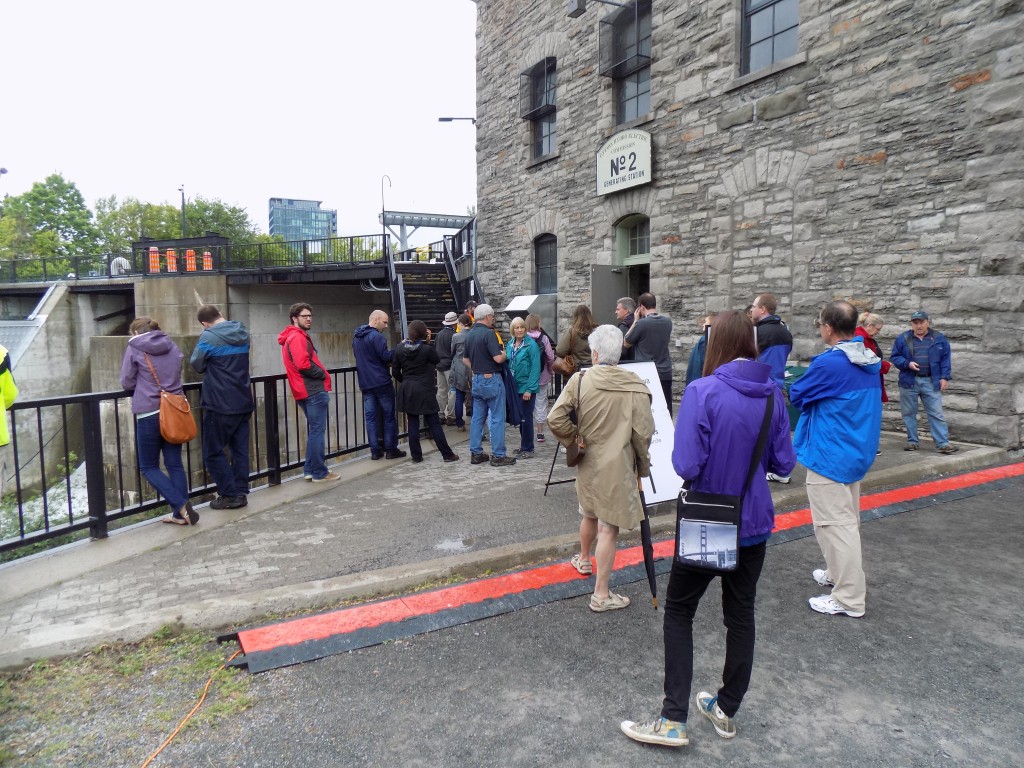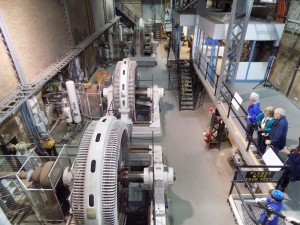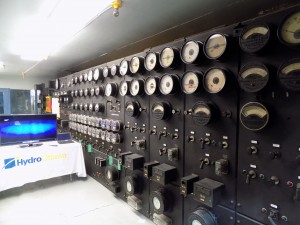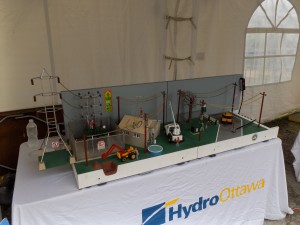Chaudiere #2: Ottawa’s 19th century power station
In Ottawa, just a short distance from Parliament Hill and luxury condominiums, is a part of the city’s past that powers the present and will power its future. Hydro Ottawa, the city-owned power utility, and Energy Ottawa, its generation division recently opened up its Chaudière #2 Generating Station on the Ottawa River for a weekend of tours. The dam and limestone powerhouse was built in 1891 during the height of Ottawa’s days as a lumber boomtown. Chaudière #2 is Canada’s oldest hydroelectric station still in operation. It’s a small station with just four units that can produce 5 megawatts of power for the city. The station is located at the channel between Victoria and Amelia Islands near the boundary between Ontario and Quebec. Hydro Ottawa has 67 percent of the water rights at Chaudière Rapids. The rest belong to Hydro Quebec and a private company that has a small station. Station #2 was originally owned by the Ottawa Power Company, which was controlled by local lumber and paper manufacturing interests before being taken over by the city utility.
In 2001, the #2 station was completely upgraded. The same old Westinghouse generators continue to spin from the force of the river’s current, but the station is now remotely controlled from a nearby facility that oversees Energy Ottawa’s three other stations at Chaudière rapids. The old control room remains intact with it’s more-than-century-old dials, meters, and gauges. “How do people make these?” a young boy asked the tour guide when he saw the old controls made in Pittsburgh where George Westinghouse started making electrical equipment in competition with Thomas Edison’s General Electric. The tour guide explained that a lot of the manufacturing was done by hand because there weren’t machines and assembly lines like there are today.
Todd Beckstead is the station operator. He’s a fitter mechanic and millwright by trade with 20 years of experience at the station. He said looking after the historic power plant, surrounded by rocky islands and trees, has the feeling of working in a park, and not near the downtown area of a big city. A woman asked him about how the water intakes—called penstocks–and turbines churning deep underwater affect fish. He said protecting fish wasn’t something power plant builders considered over a century ago and that eels living in the river are especially vulnerable. Part of Beckstead’s job is to trap eels and relocate them upstream. They’re tagged before they go back in the river. When they pass through a certain place, a high speed camera snaps a photo of them in order to monitor where the eels are going and if they are being seriously affected by the turbines.
The tours of the Chaudiere #2 generating station also featured educational displays on electrical safety and energy conservation. The “High Line” model was set up to demonstrate electrical safety hazards. The High Line was developed in the 1964 and is a miniature model of a house, street, transformer station, and power lines. The operator can demonstrate safety hazards like power lines falling on cars, kites getting caught in wires, or what can happen if someone climbs the fence and goes inside a transformer station. The Hydro Ottawa High Line is unique because it’s possibly the only one still in use. A newer version called the “Hazard Hamlet” was developed a few years ago.
Hydro Ottawa also has a North Country connection. In 2015, it purchased four small hydroelectric stations in New York from Fortis, another Canadian company. The stations are in Philadelphia (Jefferson County), Lyons Falls, Diana ( both in Lewis County), and Dolgeville (Herkimer County). Hydro Ottawa’s other Ontario generating stations are in Kingston, and the towns of Gananoque and Rideau Lakes. They’re all old, small stations like Chaudiere #2, which proves that technology from the past can be extremely valuable for meeting today’s needs for reliable, sustainable power.













Here in Potsdam, there has been a dam and some form of power generation, whether wheels or turbines, since 1804. Harnessing the power of the river was the first activity here and in most other North Country towns, and is the reason…often the only reason for a village’s existence. Wherever the river made a steep drop, a village popped up to take advantage of the “free” power of gravity. Potsdam’s river has been on the job, working for us every single day since 1804…about 77,400 days without a break by my count….arguably the most effective worker we’ve ever seen.
The Raquette River, including the part through Potsdam, is a great example of how effective small hydroelectric stations are for sustainable energy with less environmental impact than large dams and the huge reservoirs that are formed behind them. Many of the Raquette stations are now owned by Brookfield, which is actually headquartered in Gatineau, Quebec, right across the Ontario boundary from Ottawa. I’m originally from a village on the Trent River in eastern Ontario and there are hydroelectric stations, all over a century old, on the average of about every five miles along that river.